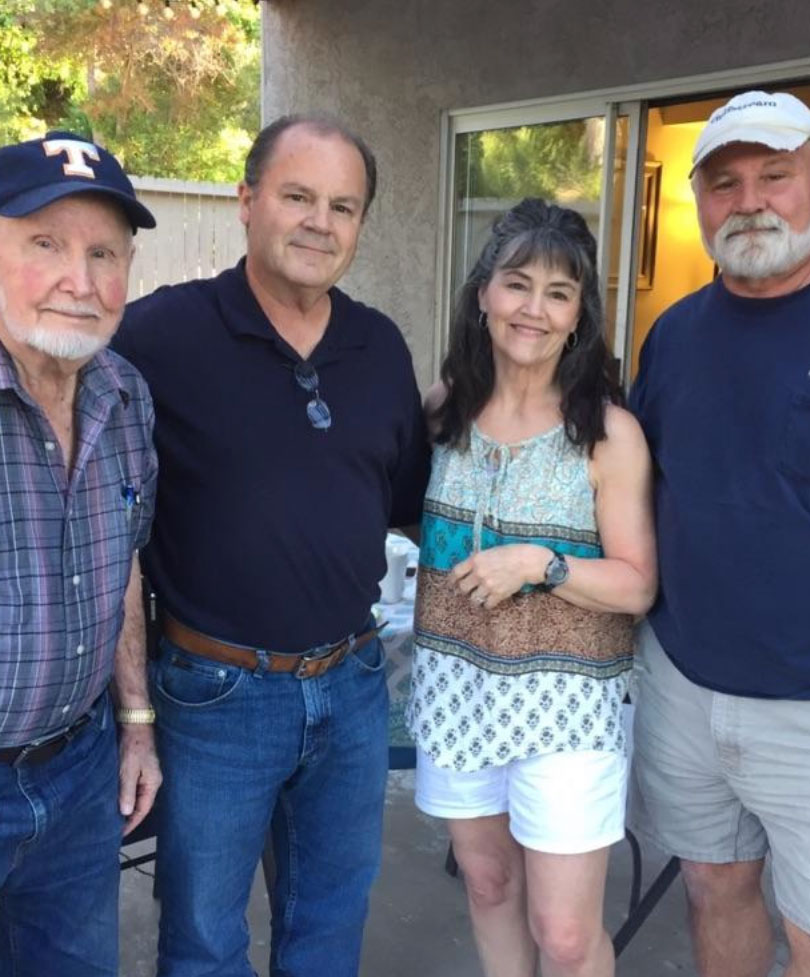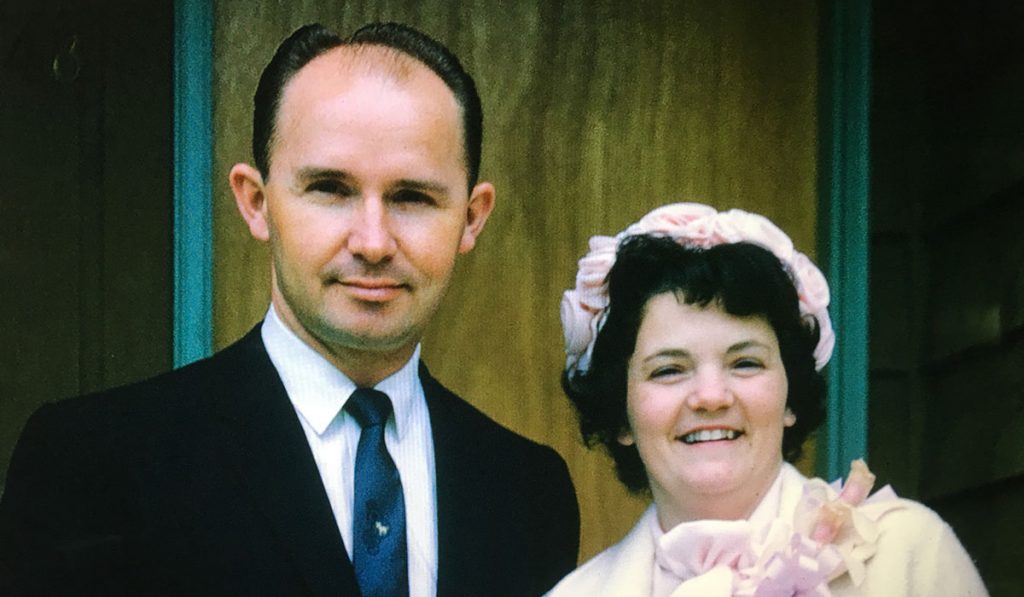Editor’s note: Roger Anderson passed away on Dec. 29. He had been in hospice care following a fall earlier in December. His son, Mike, shared his passing with a note that said, “I’m so glad that we made his career movie and so appreciative to the University of Tennessee for honoring him …. One of the last things I told him was about this article. He was at the mumbling stage, so he was incoherent, but I like to think he was saying, ‘Thank you.’”
During his career, UT alumnus Roger Astor Anderson (BS/EE, ’52) was involved with some of the most spectacular advances in the aerospace industry, from building fighter jets to working on projects that laid the groundwork for modern space exploration.
Anderson, of California, is now 93 and struggling with Parkinson’s Disease and related ills. But his story—much of it in his own words—has been preserved, thanks to his sons, Mike and Dave, and with encouragement from his daughter, Patty Hubby.
“We were moving dad closer to my brother and discovered a lot of papers with handwritten notes in collaboration with Neil Armstrong reviewing the Dyna-Soar instrumentation and cockpit details,” said Mike Anderson, who runs a small filmmaking company called Maverick Pictures. “The Dyna-Soar and the Manned Orbiting Laboratory provided the ground-floor knowledge for the Space Shuttle, the International Space Station, and the Hubble Telescope.”
The brothers worked together to film their dad talking about some of the highlights of his career. Historical photos and footage were added to produce a 30-minute film, “Engineers Do Important Things: A Pioneer Aerospace Engineer Looks Back at the Dawn of Space Travel.”
“I’ve always felt that engineers are the unsung heroes and should be recognized more; they make dreams come true,” Mike Anderson said. With his father’s health declining, “it was important to me to make this movie for him to see before he passes. He was happy to do these interviews for his grandkids, great-grandkids, and future generations of engineering students.”
A UT Engineer’s Story…
Born and raised in Knoxville, Roger Anderson was a math and science whiz from an early age. While earning his degree at UT, he served as a math tutor for student athletes.

After graduating, Anderson and his bride, Betty, moved to sunny California, where Anderson designed fighter jets and weapons systems for North American Aviation.
In the pre-computer world, design work was done by hand and a slide rule, and “I was very good at drafting,” Anderson recalled.
Around 1960, the family moved to Bellevue, Washington, and Anderson went to work for the Boeing Co., where he got “deep in the trenches” of America’s “Race for Space.”
After NASA was created in 1958, aerospace companies across the nation were working frantically to design a spacecraft that could take a man into orbit and return him safely.
Although McDonnell Aircraft Corp. won the government contract to build the first manned rocket ship, Anderson—still at Boeing—was called upon to monitor the design of the Mercury spacecraft.
Anderson also worked on a project called Dyna-Soar, which would have been the first plane capable of flying into space. During this time, he conferred with astronaut Neil Armstrong.
In 1963, the Dyna-Soar program was canceled, but aspects of the project would resurface 30 years later in the Space Shuttle.
Anderson also was involved in designing plans for the Manned Orbiting Laboratory (MOL) Program. Although that project also was jettisoned, it provided groundwork for the Hubble Telescope, the Space Shuttle, and the International Space Station.
During his work on the MOL, Anderson met one of the most infamous names in space history: Wernher von Braun, a Nazi party scientist and pioneer of rocket and space technology in the United States.
“Von Braun talked all of the time,” Anderson recalled. “But he was really impressed with the little new switches I’d invented.”
In the 1970s and 1980s, the final decades of his career, Anderson helped NASA and Rockwell International develop the main engines’ critical systems sequencing systems software for the Space Shuttle program. Known as the Redundant Set Launch Sequence or RSLS, this system enabled the shuttles to launch and fly their missions.
Lifetime of Achievement
Mike Anderson said the family has enjoyed listening to their father reminisce about his career. And Roger Anderson has delighted in the attention, including receiving a lifetime achievement certificate from UT.
“In the early days of aerospace, I was fortunate to accomplish work that was never done before and was very important,” Roger Anderson told his sons as they made the film. “And that was very rewarding to me.”
Contact
Rhiannon Potkey (865-974-0683, rpotkey@utk.edu)
